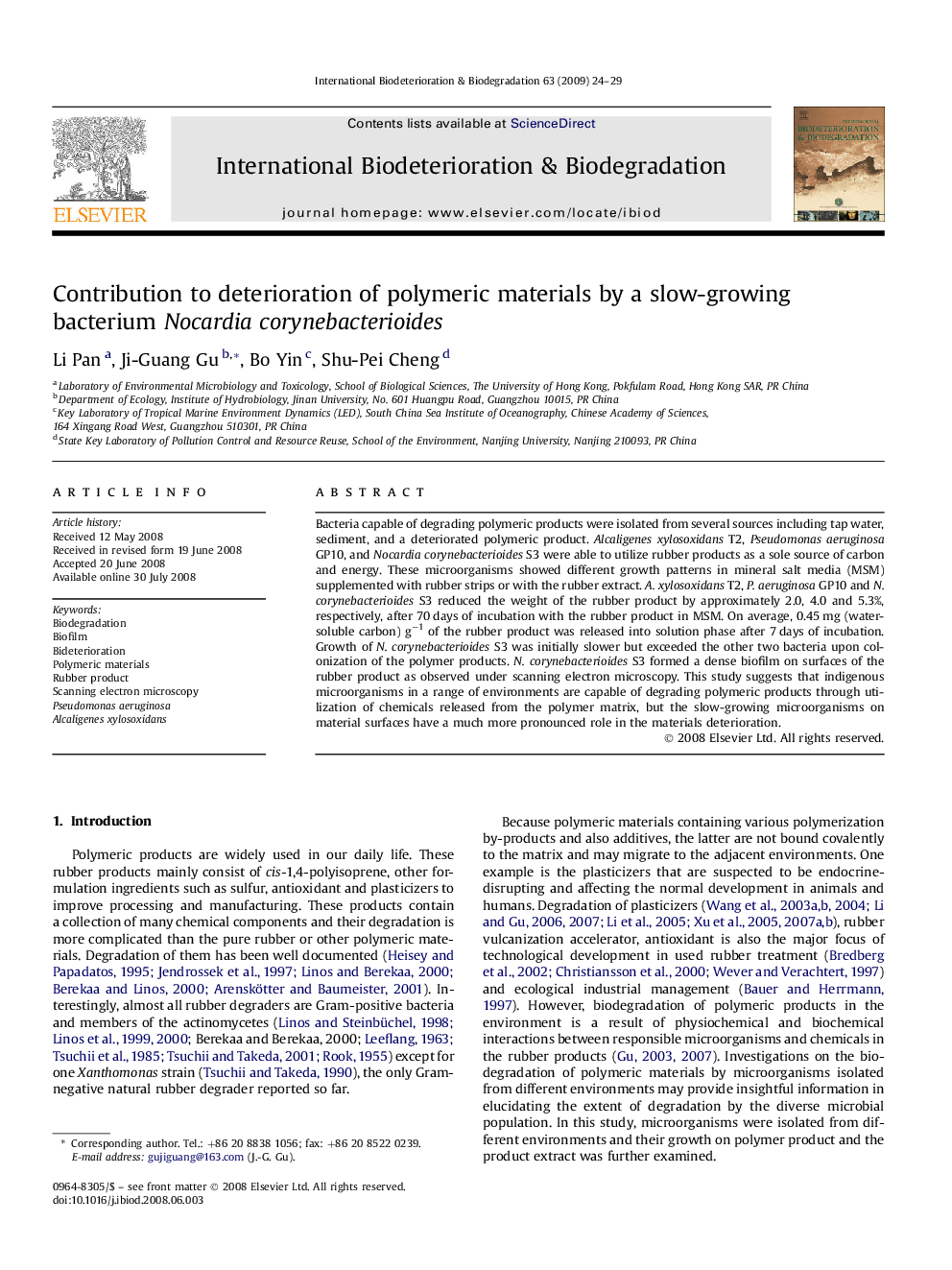| کد مقاله | کد نشریه | سال انتشار | مقاله انگلیسی | نسخه تمام متن |
|---|---|---|---|---|
| 4365525 | 1301763 | 2009 | 6 صفحه PDF | دانلود رایگان |

Bacteria capable of degrading polymeric products were isolated from several sources including tap water, sediment, and a deteriorated polymeric product. Alcaligenes xylosoxidans T2, Pseudomonas aeruginosa GP10, and Nocardia corynebacterioides S3 were able to utilize rubber products as a sole source of carbon and energy. These microorganisms showed different growth patterns in mineral salt media (MSM) supplemented with rubber strips or with the rubber extract. A. xylosoxidans T2, P. aeruginosa GP10 and N. corynebacterioides S3 reduced the weight of the rubber product by approximately 2.0, 4.0 and 5.3%, respectively, after 70 days of incubation with the rubber product in MSM. On average, 0.45 mg (water-soluble carbon) g−1 of the rubber product was released into solution phase after 7 days of incubation. Growth of N. corynebacterioides S3 was initially slower but exceeded the other two bacteria upon colonization of the polymer products. N. corynebacterioides S3 formed a dense biofilm on surfaces of the rubber product as observed under scanning electron microscopy. This study suggests that indigenous microorganisms in a range of environments are capable of degrading polymeric products through utilization of chemicals released from the polymer matrix, but the slow-growing microorganisms on material surfaces have a much more pronounced role in the materials deterioration.
Journal: International Biodeterioration & Biodegradation - Volume 63, Issue 1, January 2009, Pages 24–29